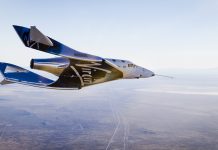Recent studies using JWST and Earth-based telescopes reveal the presence of heavy elements in the ejecta of material from the gamma-ray burst GRB 230307A
Recent observations from JWST and ground-based telescopes have confirmed the presence of heavy elements in the ejecta of material from the gamma-ray burst GRB 230307A.
Classified as a kilonova, GRB 230307A is considered the second brightest gamma-ray burst. One of the notable consequences of kilonovae is the generation of heavy elements such as tellurium, which is classified as a metalloid in the periodic table. Scientists also suggest that iodine, essential for life on Earth, may be generated by kilonova gamma-ray bursts since both elements are located next to each other on the periodic table of elements.

Tellurium is an extremely rare element on Earth, even rarer than platinum, and is used in various metal alloys, semiconductors, oil refining, and solar cell production. Although rare on Earth, tellurium has been found in planetary nebulae and ancient stars. Recent observations have also shown the presence of iodine in these space objects.
JWST helped detect the presence of tellurium and iodine from the gamma-ray burst GRB 230307A
Lasting 200 seconds, GRB 230307A was approximately 1000 times brighter than traditional gamma-ray bursts and is the second brightest gamma-ray burst ever detected. It was discovered in March 2023 by NASA’s FERMI space telescope, and subsequent observations were made using JWST’s infrared and spectroscopic instruments 29 and 61 days after the flare.
Kilonovae are the result of the merger of two neutron stars and are thought to produce rare elements that are significantly heavier than iron. The brightest kilonova was discovered in 2022 and named BOAT (Brightest of all time, the brightest of all time). Observations of gamma-ray bursts have been carried out for more than 50 years, the first was recorded on July 2, 1967, and confirmation of this event came in 1969. Gamma-ray flashes are classified into short and long, with short-lasting less than two seconds and long-lasting several minutes.
Scientists hope that with the use of JWST and ground-based observatories, it will be possible to detect and study even more kilonovae and expand our understanding of the synthesis of heavy elements in the Universe.




